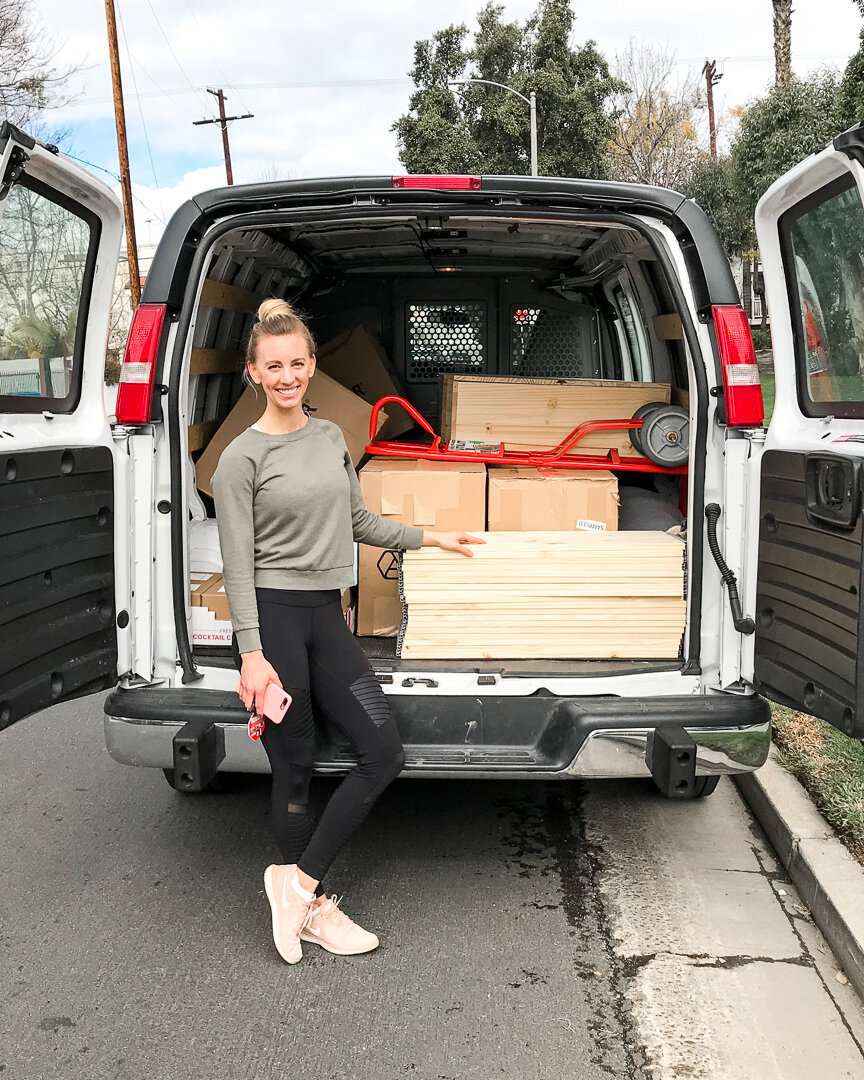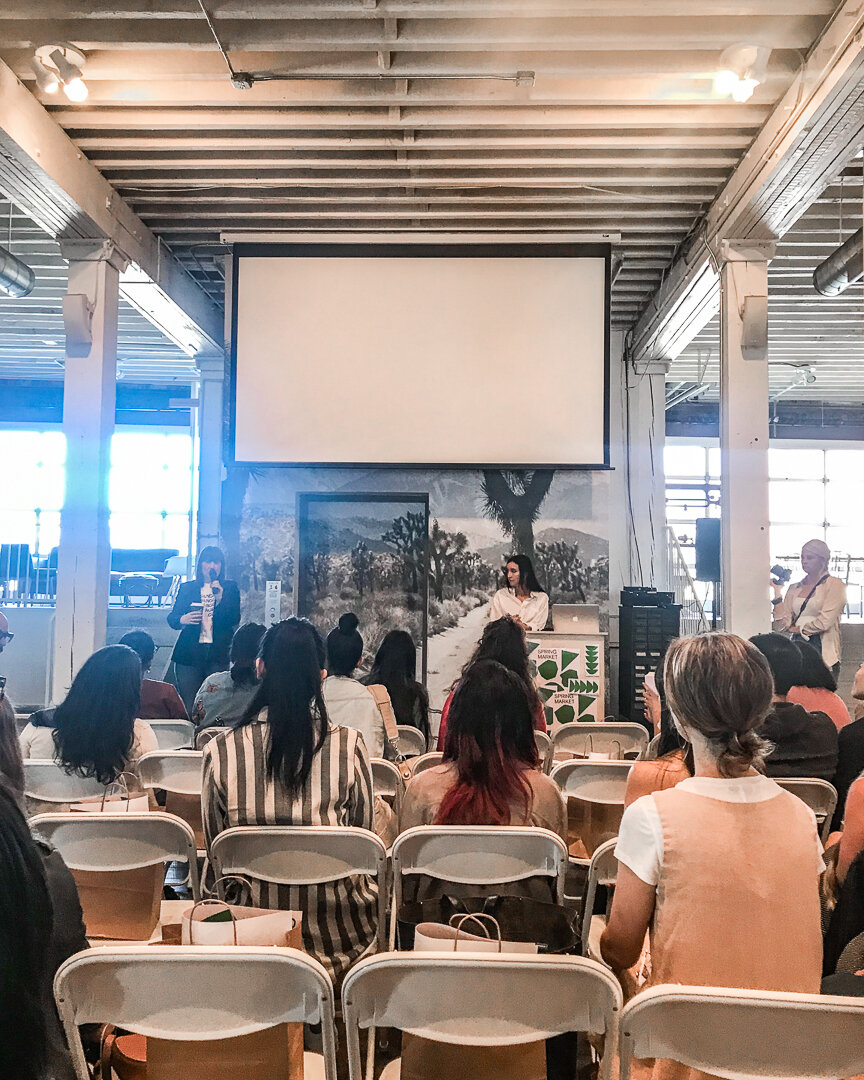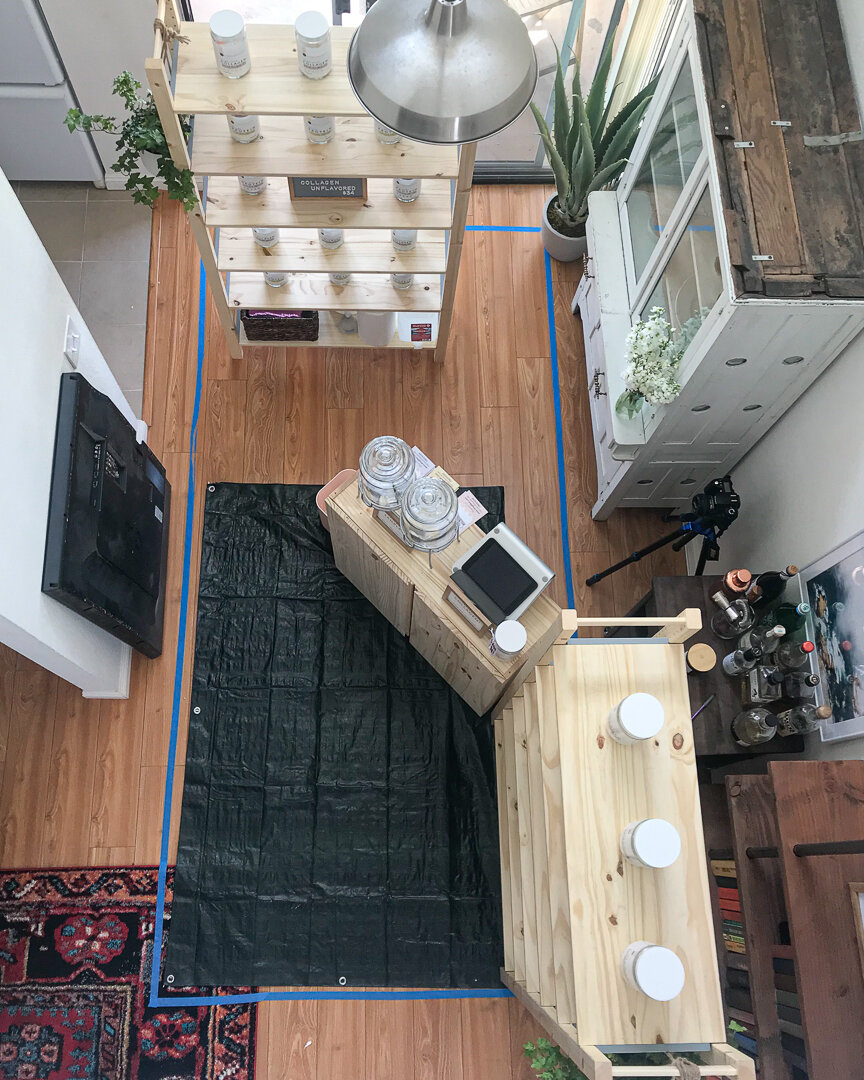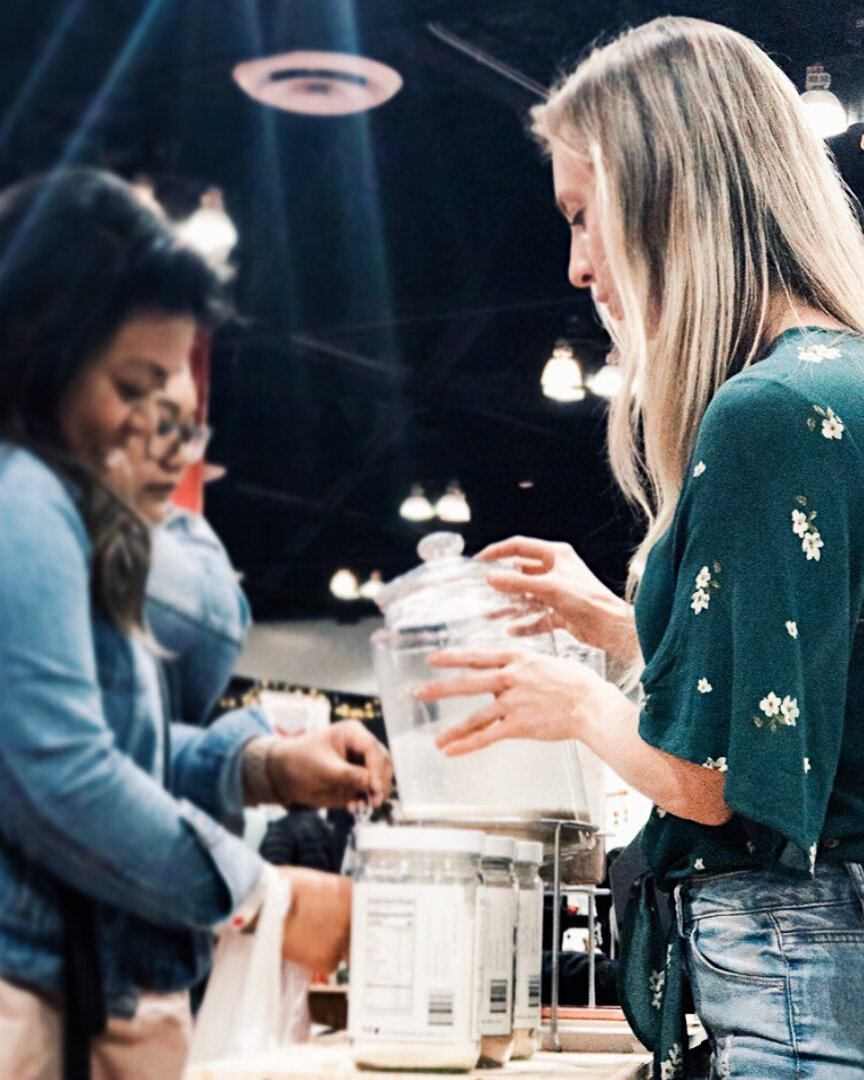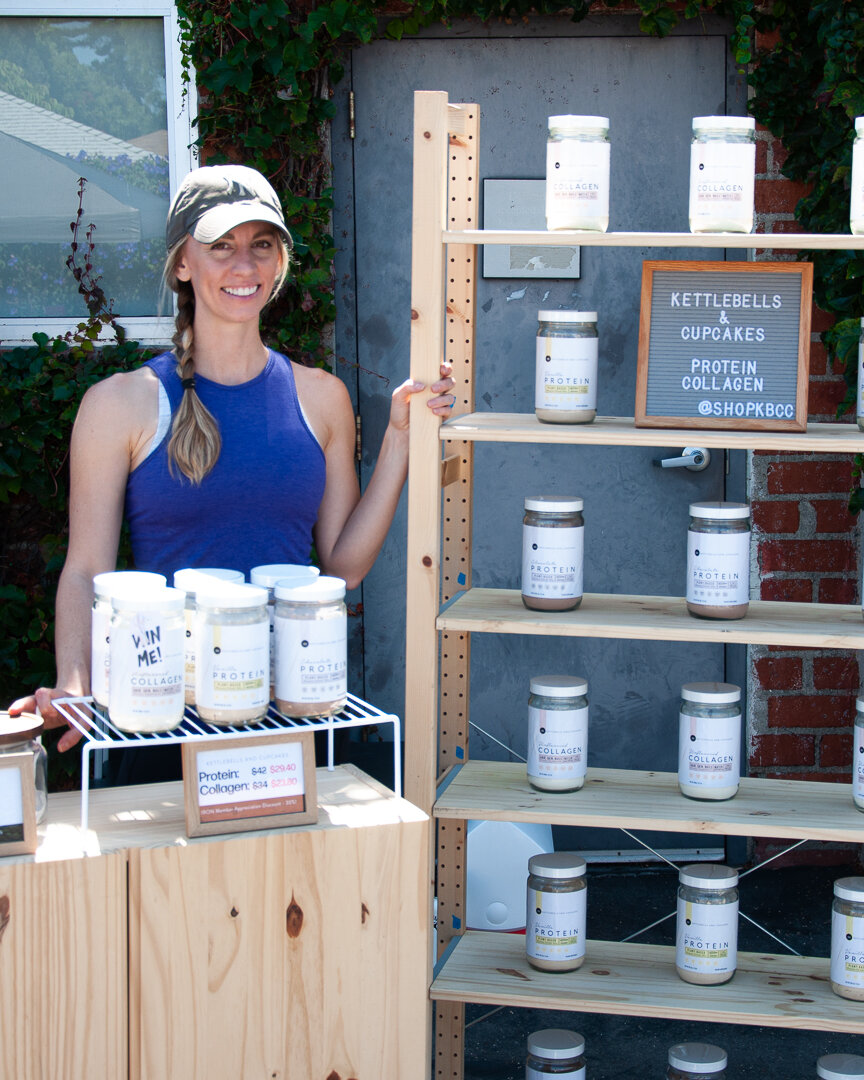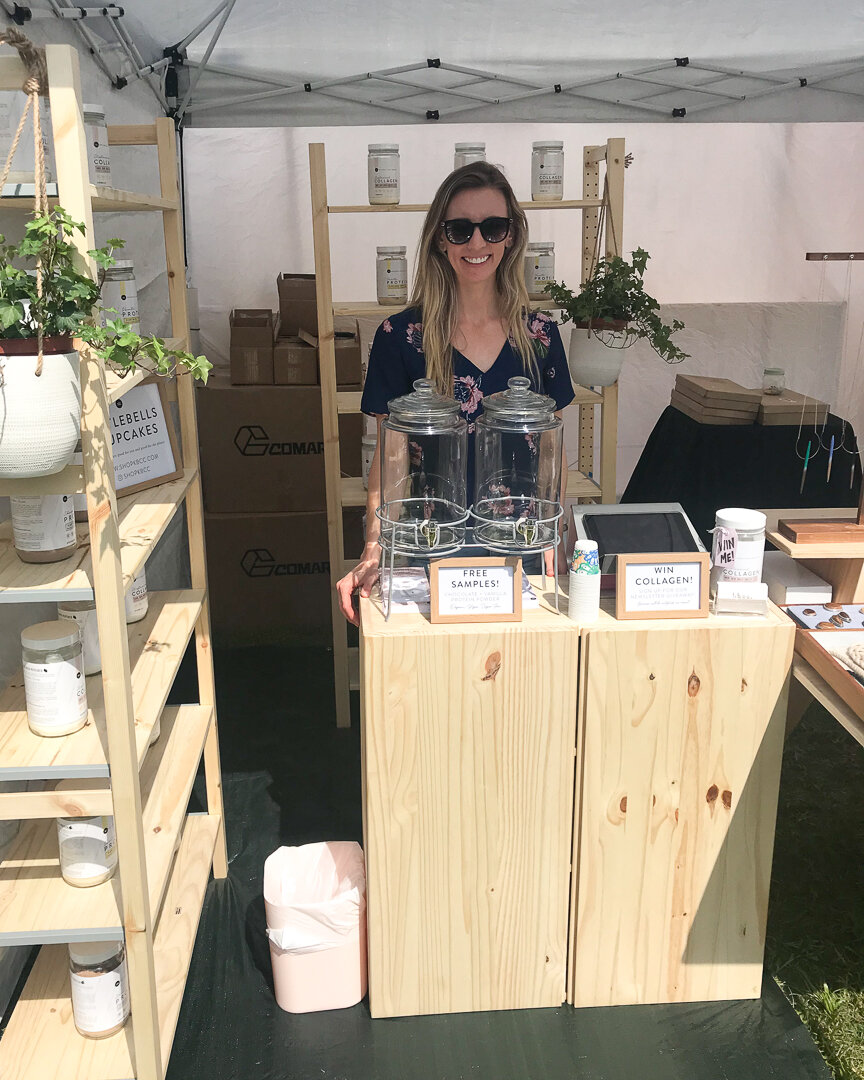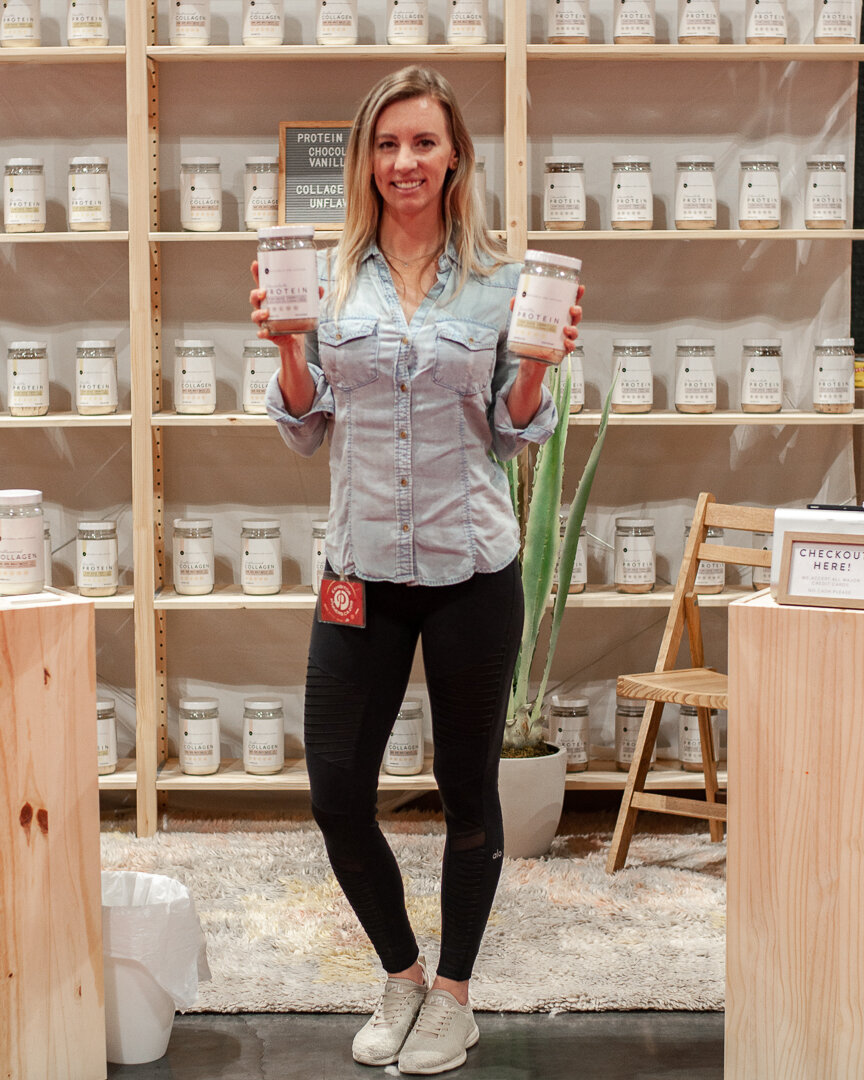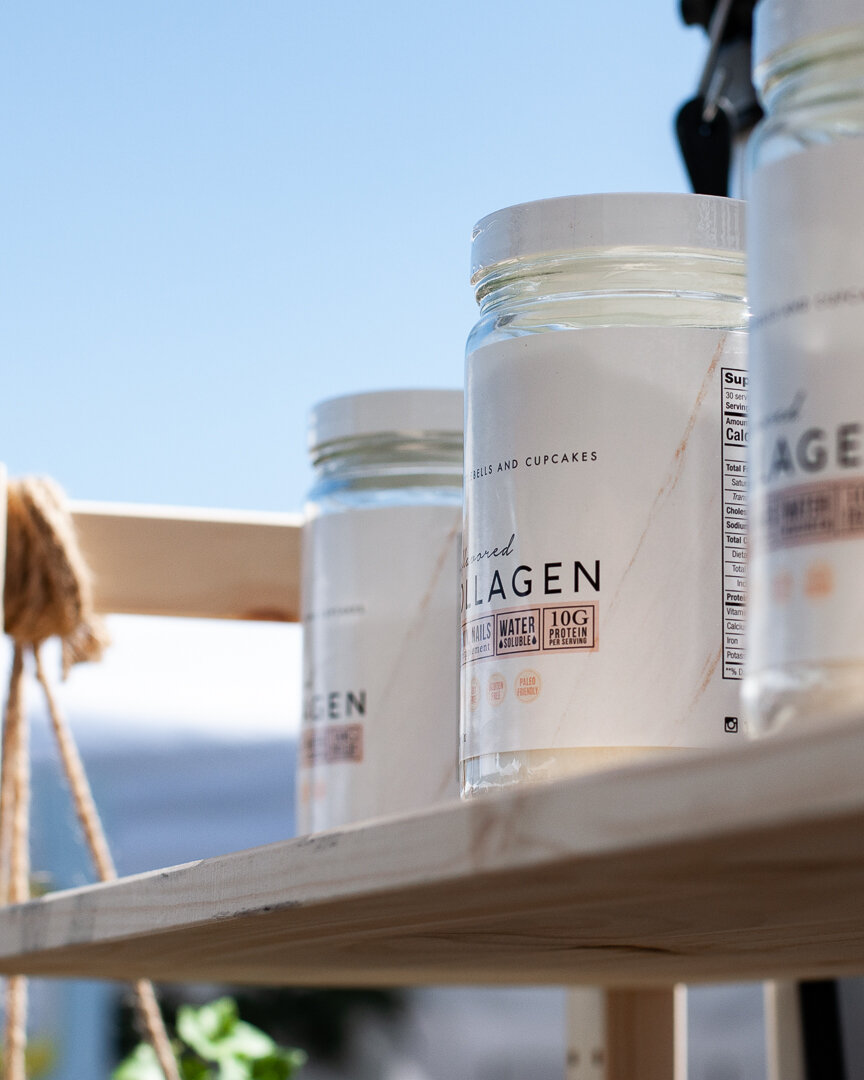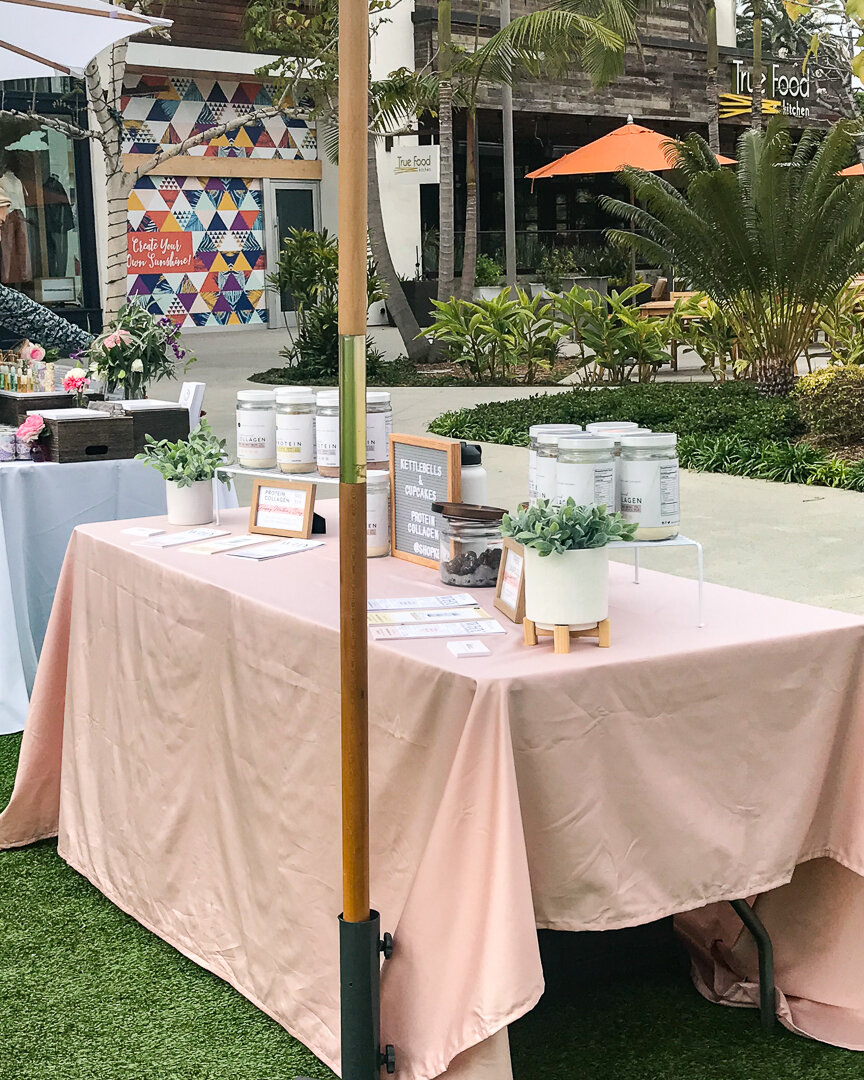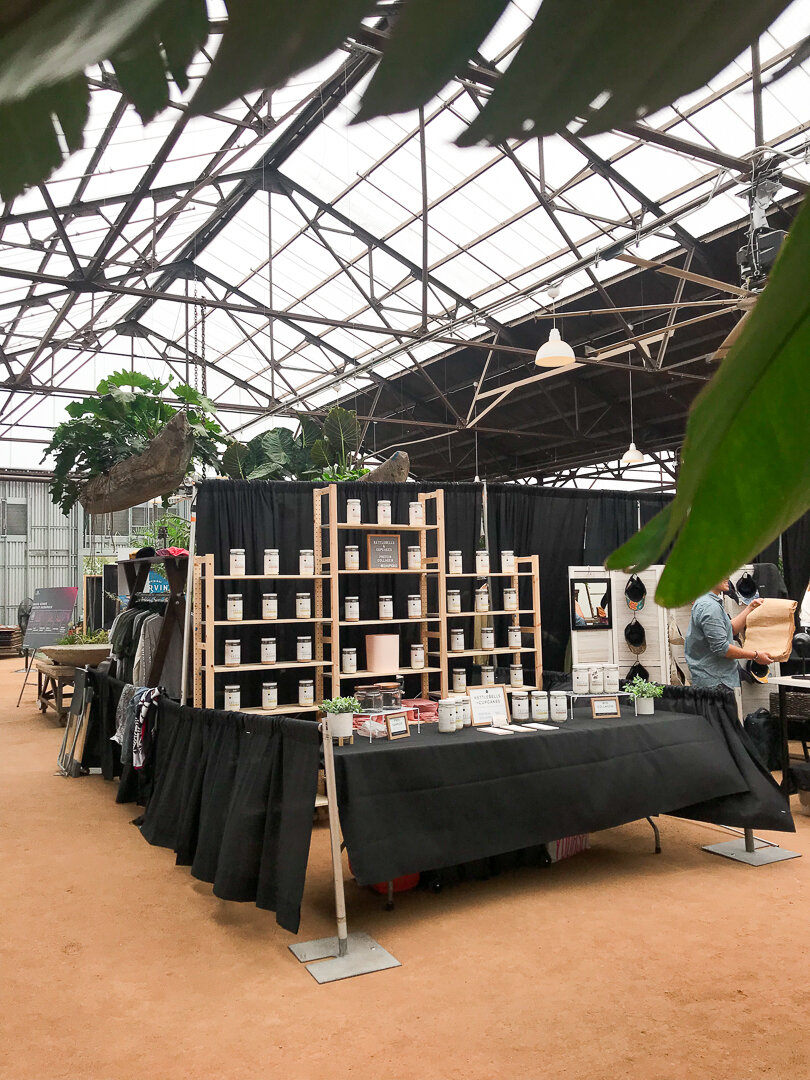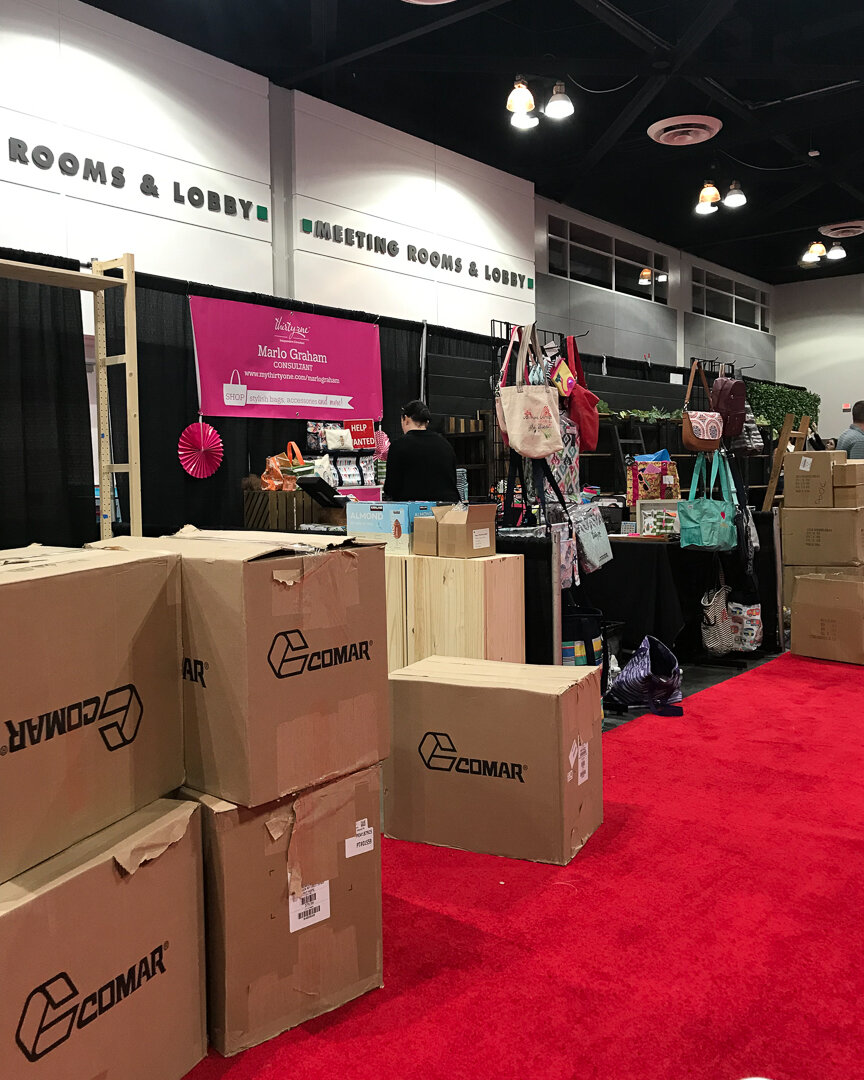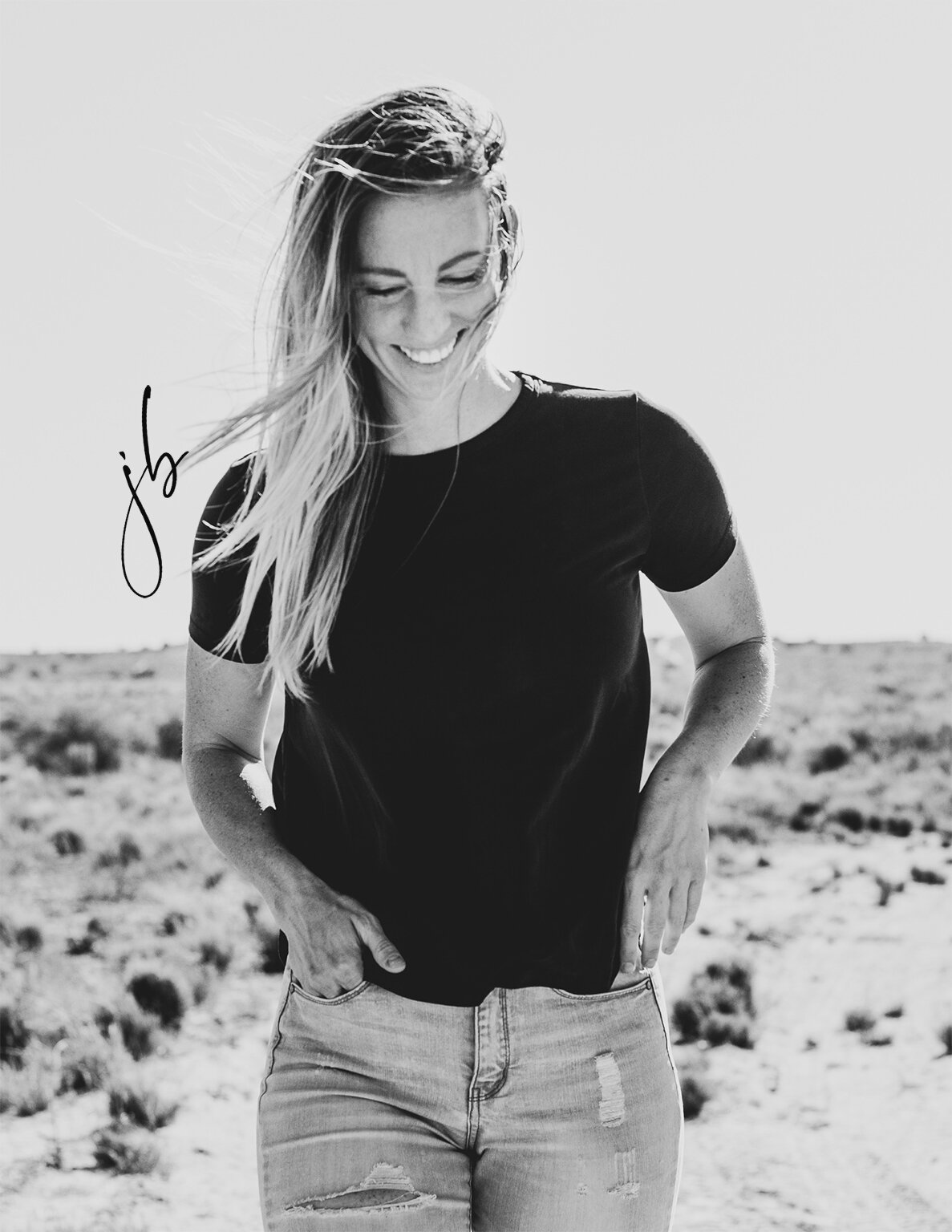What to Expect When Exhibiting at a Show
/I had no idea what to expect at my first show. I knew that I enjoyed attending them, but exhibiting at one felt strangely intimidating and impossible. How do you set up a booth? How do you take credit cards? Do you need a lot of inventory on hand? How does the load in and out work? So many questions.
When I launched Kettlebells and Cupcakes in January of last year, I knew that without a massive marketing budget, I’d have to spread the good word the old fashioned way. So I signed up to exhibit at a bunch of events.
I then furiously googled “exhibit tips” and scoured Pinterest for booth ideas that didn’t cost thousands of dollars to create. I’d find vague advice here and there, but as with most scary things in life, I had to just dive in and figure it out.
It wasn’t all smooth sailing (obvi), but looking back on last year, I’m proud of myself for getting out there. It was 100% worth the learning curve because it’s a great way to refine your brand and messaging, and also better understand what consumers want.
Over time things also got more efficient, and I certainly learned a couple tricks along the way (some of which would have saved me a lot of time and money). If you are thinking of exhibiting at a show, do it, it’s kind of an entrepreneur rite of passage, and you’ll learn a lot about your brand. Hopefully some of these tips will help you feel at ease and more prepared!
What to Expect: Booking Shows and Setup Logistics
Not all shows are created equal. This is especially true for the bigger ones. Look for companies like Unique Markets who provide training and resources ahead of time.
Choose events that have a robust outreach strategy. This includes a website where they list you as a vendor (this is very important for post-show reach-outs, more on that below). Renegade Craft Fair is great at this.
Ask what is provided with the booth fee. Some events will provide tables, table cloths, umbrellas for outdoor events, chairs, etc, and some provide nothing. If they provide nothing, you’ll need to factor rental fees into your overall cost. Shop Artisanal is good about providing you everything.
Factor in permit requirements to your overall costs and time restraints. Most shows require at least a sellers permit (free, but you have to have it). Others require county permits which are not free and can take up to 10 days to process, and for us food folks, you will likely need extra permits and commercial kitchen validations.
Plan out your display space ahead of time. At first I would tape out the booth size at home and set it up. This helps you visualize the flow, as well as not forget anything.
Get these Ivar Ikea shelves for your booth. They come apart easily, they can be adjusted to any height, they don’t really weight that much. I also always got compliments from both vendors and shoppers on how pretty my display looked (and it was literally just product on these shelves).
Find out about parking and get there early. All the vendors will be arriving and unloading at the same time, and it gets hectic fast.
Bring lots of business cards and product hand-outs. A lot of people are drive by shoppers, and aren’t ready to commit to a purchase in the moment. The will however take your card and look you up later. I always noticed website traffic spikes after events.
What to Expect: During the Event
Bring a chair to sit in. My first event was in a huge conference center with back to back 12 hour days. I didn’t bring a chair on the first day and it was brutal.
Bring a water bottle and snacks. Unless you have a booth buddy, you won’t have much time to refuel, so you wanna at least have water and something to eat. Protein shakes are great for this, just sayin’ :).
Free samples are key. They are an easy way to get people to come over to your booth (people love free shit), and also help bridge the initial awkward convo gap.
That said… keep your samples simple. For my first few events I was bringing pre-made protein shake samples in large glass jugs. It was great for sampling, but people always made a mess somehow, and it was a nightmare to transport back and forth. I also barely skirted the health department inspections because they weren’t thrilled that it wasn’t chilled at all times. So I switched to serving these Protein Peanut Butter Balls, and it was a stress-reducing game changer.
Become besties with the vendors around you. Because you are all exhibiting products that you’ve poured your blood, sweat, and tears into, you’ll instantly have a deep understanding of each other. I met some amazing people this way. It also helps to have someone look after your booth if you are working solo and need to run to the restroom.
Hire help (even if it’s just a few hours). Or drag a friend or significant other to give you at least a little time to eat and chill. Events are draining and there’s no way around it, so when you can take a 30-60 minute break in the middle, it makes a big difference.
What to Expect: Sales
You will not sell as much product as you think you will. And that’s ok and normal! I had no idea what to expect for my first show, so rolled in with 300 jars of product. I sold ~60. Setup and and take down were worse than a bootcamp workout.
The goal of exhibiting is obviously to make money, but it’s also about brand exposure and market research. You should aim to at least recoup your booth fees, anything on top is bonus. If you don’t break even, that may not be the show for you to do again. (Disclaimer: this may not be true for all brands. Candles and jewelry tend to do well at artisan markets, so it depends on your product and overall business goals - for instance some people really enjoy the show circuit and aren’t focused on expanding. This is not the case for me)
Not all shows are great for all products. And don’t compare yourself to the booth next to you. It can feel disheartening if your neighbor seems to be crushing it in sales, while you have nothing. Be patient and remember that being at the event is more about market research and brand outreached than it is purely for sales.
Lower ticket items tend to do better at most shows. This makes sense. I know for myself when I walk into an adorable market where every booth is amazing, I’m very careful about how I spend my dollars in the moment. But I will always take biz cards and look up vendors later, which is why collateral is important.
Find out the general demographics if possible before the show. This will help you determine if it’ll be worth your time. Not every show will be a good fit.
Sometimes a show is a bust and you loose money and that’s ok. It happens to literally every vendor (you’ll all be besties by the end, and will compare notes about the day). The average booth fee is ~$200-$300 (and up), and then you have to take in account permits, rentals, booth setup materials, collateral etc which can add an additional $300+. So keep the goal of the event (market research and brand exposure) in perspective as it pertains to sales.
What to Expect: After the Event
Plan to take the day after off work if possible. You’ll need it to re-charge. Most events are over the weekend, which means you already put in a full week. Don’t try to be a superhero and charge right into Monday, you’ll burn out.
It’s going to make a hug mess in your house. No matter how organized I would get, there was always pre-show running-around, and post show just-get-it-in-the-house I’ll put it away later. Know this will likely happen so that it won’t bug you.
Don’t overbook yourself with shows (unless you are an extreme extrovert). My good friend Stephy warned me about this on my way to my first show. After it was done, I understood why. Over time they get less draining, and you also start learning which ones are more worth your time for your business. But at least for me, I need a few weeks in-between shows. (That said, I met a vendor who said her goal was 200 shows for the year… it blew my mind, she must be part robot)
Expect random reach-outs, even months after the show. In my opinion this is where the real value starts to kick in, and also why it’s important to be apart of shows that have a good web presence that will list your website. Just off Renegade Craft Fair alone for instance, I got a bunch of packaging and wholesale reach-outs, as well as a TV producer who found my business and wanted to cast me in a new show for NBC (I didn’t end up going forward with it for a few reasons, but the point is, the reach out came because I was affiliated with that event).
You will learn about your product and what people need to know about it. This to me has been by far the most valuable part of doing shows. You are an expert in your product, but the general public is not. It’s interesting to hear the questions you get or listen to feedback on the packaging or formulas (heads up, it won’t be all good). Having direct face to face contact with your consumers is really valuable for shaping copy on your website, learning about what people want and need, and what products you should look to develop next.
The biggest thing I always remind myself going into a show, is that it’s my job to show up. If it goes well, amazing! Take the win. If not, it’s still a win because I learned something. Business is weird and people are unpredictable, it’s a numbers game.
Know that’s normal and keep at it!

